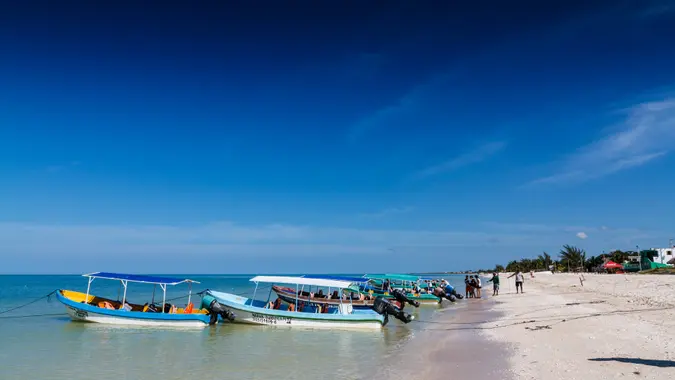This US Travel Destination Is Considering a ‘Climate Tax’: Here’s How Much More You’ll Pay

Commitment to Our Readers
GOBankingRates' editorial team is committed to bringing you unbiased reviews and information. We use data-driven methodologies to evaluate financial products and services - our reviews and ratings are not influenced by advertisers. You can read more about our editorial guidelines and our products and services review methodology.

20 Years
Helping You Live Richer

Reviewed
by Experts

Trusted by
Millions of Readers
One of the most expensive places to vacation in the U.S. may get even pricier. Hawaii state legislators and Governor Josh Green are looking to introduce a $25 climate tax, per person, for tourists staying in “transient accommodations,” including hotels, resorts, and other short-term rentals.
This flat-rate charge would be in addition to the 10.25% Transient Accommodation (TAT) Tax currently imposed on all Hawaiian Islands, along with a 3% visitor tax imposed in Oahu.
The charge would apply to any visitors, even if they were staying in Hawaii free, or using rewards, miles, or loyalty points to fund their hotel or resort stay. Visitors to health care facilities, school dorms, military housing and non-profit organizations would be exempt, according to the proposed legislation, as Fox Business reported.
Climate Impact Fee Ostensibly To Protect Local Environment
The proposed $25 Climate Impact Fee would raise more than $68 million for the Hawaiian Islands, annually, Green said in his state-of-the-state address this year. “A Climate Impact Fee on visitors would provide the needed resources to protect our environment and increase awareness of the impacts of climate change,” he said in his speech, as Hawaii Public Radio detailed.
Green noted that he was open to other suggestions and proposals, including increasing the TAT tax, imposing additional charges to access beaches, parks, and other leisure spots, or requiring park licenses.
He said the funds raised could be invested in beach preservation, fire breaks, and preventative measures to avoid another fire like the one that occurred in Maui. “I believe this is not too much to ask of visitors to our islands,” he said during his speech.
Tourism Vital to Hawaii’s Economy: Will This Fee Hurt?
Tourism comprises roughly 25% of Hawaii’s economy, according to a report from the University of Hawaii. In March 2024, more than 855,537 tourists spent $1.76 billion, with most visitors hailing from other states in the U.S., according to Hawaii-Guide.com.
These figures were down from March 2023, in large part due to the Maui wildfires in August 2023. Tourism in the state has still not recovered. Hawaii-Guide.com initially predicted that tourism would return to pre-pandemic levels by the middle or end of 2024, but, after the wildfires, experts now predict it might take until 2026 for a full recovery.
Funds from the Climate Impact Fee could help speed recovery while funding preventative measures to avoid future climate disasters. Considering that a family of four needs as much as $13,495 for a 10-day Hawaii vacation, an extra $25 per visitor, per trip, is unlikely to deter tourists, wrote ESG Legal Solutions.
 Written by
Written by  Edited by
Edited by 

























